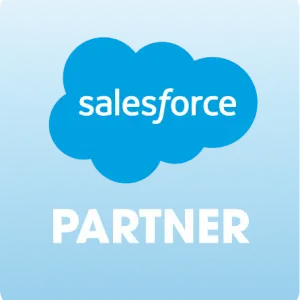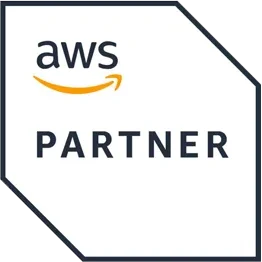
Dale Hopkinson
Senior Product Manager
Consumption-based pricing, also called usage-based pricing or metered pricing, means you bill customers based on their usage rather than a flat upfront price.
It's a pricing strategy that provides software vendors with an adaptable, cost-efficient, and transparent way of engaging with customers.
Consumption pricing first took the market by storm with SaaS usage-based pricing models (often called UBP). But with pricing and packaging driving more and more monetization efforts, we’ve seen an interesting evolution of the model.
- The rise of the hybrid method, offering consumption options alongside the more traditional seat-based subscription methods.
- Creative solutions to balance prepaid and postpaid revenue.
- Companies that offer complex products with a mix of cloud, on-premises, and hybrid deployments join the usage-based pricing bandwagon.
If you are a product manager, revenue leader, or business executive juggling complex business needs, this article is for you. It provides a comprehensive overview of consumption pricing and highlights the methods that will make it work for your business.
The Basics of Consumption (Usage-Based) Pricing
Discover what a consumption pricing strategy is, what can be charged on a consumption basis, and which companies are successfully growing revenue with usage-based pricing.
What is consumption-based pricing?
A consumption-based pricing model, or usage model, means you charge your customers for a product or service in direct proportion to their usage. Simply put:
Use more, pay more.
Use less, pay less.
It's a shift from committed-rate pricing strategies. Committed rate is the way most subscription, seat-based software is purchased. It's like paying for a monthly gym membership, where you can go as often as you like, for as long as you want. If you slack off and don't get to the gym, you still pay (and don’t reap the rewards). With committed rate contracts, your customer pays for licenses or seats. They in turn get access to the product, regardless of how much they use it or even if they don't use it at all.
The consumption-based model, is like how you pay for electricity or water. Payment is directly linked to how much you use each month. With a usage-based rate, you charge customers for the resources they consume. The more they use, the more they pay.
What components can be charged on a per-use basis?
To charge for usage, you must sell something with a parameter that can be directly connected to a price.
Parameters need to be measurable and provide value for the customer.
Common examples of entities that can be charged per usage are:
- Data storage volume
- Bandwidth usage
- Number of users
- Transactions processed
- API calls
Examples of companies that offer consumption-based billing:
- Amazon Web Services
- Microsoft Azure
- Google Cloud
- Adobe Inc.
- Box Inc.
- Snowflake
- Salesforce
- ServiceNow
The Benefits of Consumption Pricing
Vendor Benefits
1. Increase customer acquisition.
Sometimes, budget constraints are the only thing preventing your product from gaining traction in new target markets. Consumption pricing allows you to sell your product at a lower starting cost. This can help increase customer acquisition because new market or customer segments can now purchase your product. Generating additional sales just by changing pricing structure - without re-engineering your product - is a cost-effective way to drive efficient growth.
2. Increase adoption of specific features.
With a usage-based pricing model, vendors can meter usage for individual features, allowing users to experiment with minimal risk. Most companies who use this technique continue to offer their regular flat-rate pricing, while “gating” certain features behind a metered pay-wall. This approach encourages users to explore new features, leading to increased adoption and incremental revenue.
3. Grow at Scale.
The key requirements to scale a business are attracting more customers, retaining them longer, and monetizing the customers you have. Consumption-based pricing can drive this process, following a "land and expand" strategy. It increases acquisition by lowering the cost barrier, enhances retention by prioritizing customer satisfaction, and increases monetization because it provides an opportunity to upsell satisfied users into higher-value deals.
User Benefits
1. Cost-efficient.
Users pay only for the services or resources they consume, leading to lower costs compared to flat-rate pricing models. Customers who use your product sporadically aren't penalized for lower usage.
The lower cost also means companies that want to purchase your product can skip a complex procurement process. With usage-based licenses, users can stay within pre-approved budgets because they do not need to invest in the entire software package upfront. An engineering manager, for instance, may want to buy a new software tool but is limited to $2,000 per purchase without executive-level approval. With usage-based pricing, the manager can access the tool if they keep usage within the $2,000 limit.
2. Flexible.
With usage-based pricing, your users can scale their usage up or down as their requirements evolve. Users won't pay for unused or underutilized resources — particularly important for customers with fluctuating usage patterns, like seasonal businesses or those in academia. When business conditions, budgets, or demands jump, customers can quickly start using more and paying more.
3. Transparent.
Pricing transparency is important to today's consumers. Just as a detailed breakdown on an electric bill helps consumers understand their energy usage and accept the associated costs, usage-based billing empowers customers to discern what they're paying for. With no hidden charges, the direct link between value and pricing fosters trust and confidence in your offering and your business.
The challenges with usage-based pricing
The consumption-based pricing model is more complex than other pricing models and has its fair share of potential challenges.
Let's break them down.
Challenges for users
Higher costs, low predictability.
As users benefit from additional features and capabilities, their usage may increase, potentially leading to higher costs. Customers choosing a usage-based pricing model need to carefully monitor their usage to avoid exceeding their spending limits. The need to limit usage can be frustrating, especially if they are getting value from the product.
Challenges for sales reps
Smaller deal sizes mean lower compensation.
If your sales reps are incentivized commission linked to deal size, reps might earn lower commission because the initial usage revenue is lower than the subscription price. To address this new model, many companies are using creative compensation plans, such as compensating sales reps for their acquisition of new consumers or for net retention rates. Ultimately, what is good for the customer is good for the company and everyone can come out ahead.
Challenges for the business
Unstable financial projections.
While implementing usage-based pricing has many financial upsides, it also presents business challenges. One of the most significant is unpredictable financial modeling because shifting usage leads to fluctuating revenue.
Another financial challenge is that in the short term, your big accounts may switch to a pay-as-you-go model and spend less on your product. However, you should be able to offset the users' move to smaller contracts by increasing acquisition and your pool of potential upsell opportunities.
WHITE PAPER
Create Recurring Revenue with Software Licensing
Why recurring revenue models deliver strong value, how did Candela generated new recurring revenue,
and how have customers have changed their thinking about price and value.
Consumption Pricing Model Examples
Consumption Tiers
The product comes in different tiers, with usage limits applied to one or more features. When users reach a limit, they can either upgrade to a higher tier for more usage or find ways to stay within their current tier's limits.
Consumption Pricing model example: Wix

Consumption Alongside Seat-Based Licensing
Customers buy classic subscription licenses or choose a consumption plan. Giving customers the power to choose how they want to pay can be an important differentiator, especially if you sell in a crowded market.
Consumption Pricing model example: Tencent Cloud

Prepaid Consumption Credits (Token Pricing)
Customers buy credits that they can use against their usage as they go. Prepaid credits provide predictability for the customer (they know their maximum spend) and guaranteed revenue upfront for you (from the initial credit purchase).
Consumption Pricing model example: MailChimp

Pay-As-You-Go with Committed Rates
The fee has two parts: a base minimum and a usage charge. You’ll rest easy knowing you’ll have a set minimum monthly revenue. Users get all the benefits of usage-based pricing. Plus, users with low usage, or usage that varies by season, can potentially pay less than the standard monthly subscription fee.
Consumption Pricing model example: IBM

Executing your custom consumption-pricing approach with Thales Sentinel
It’s no surprise that SaaS companies were the early adopters and drivers for consumption-based pricing in the software industry. According to ChargeBee, 38% of SaaS companies offer consumption pricing. As Open View Partners points out "usage-based pricing is more than a pricing strategy—it’s a company-wide mindset."
But what happens if you want to embrace a customer-first culture, but your products are not cloud connected? Or if you your suite has both SaaS apps and On-premises solutions? At Thales, we find solutions so that any company that wants to implement usage-based pricing can.
Tools like Thale’s Sentinel entitlement management system provide a unified platform to configure pricing and packaging and automate software fulfilment regardless of how you deliver your products. From SaaS to IoT to On-Premises products, we unlock consumption pricing for the most complex workflows.
At Thales, we have helped thousands of successful companies design and implement pricing models that have transformed their business. Our licensing expertise and Sentinel's unmatched technical capabilities allow these companies to unlock monetization models.
Explore further to discover the full range of licensing models supported by Thales Sentinel.


